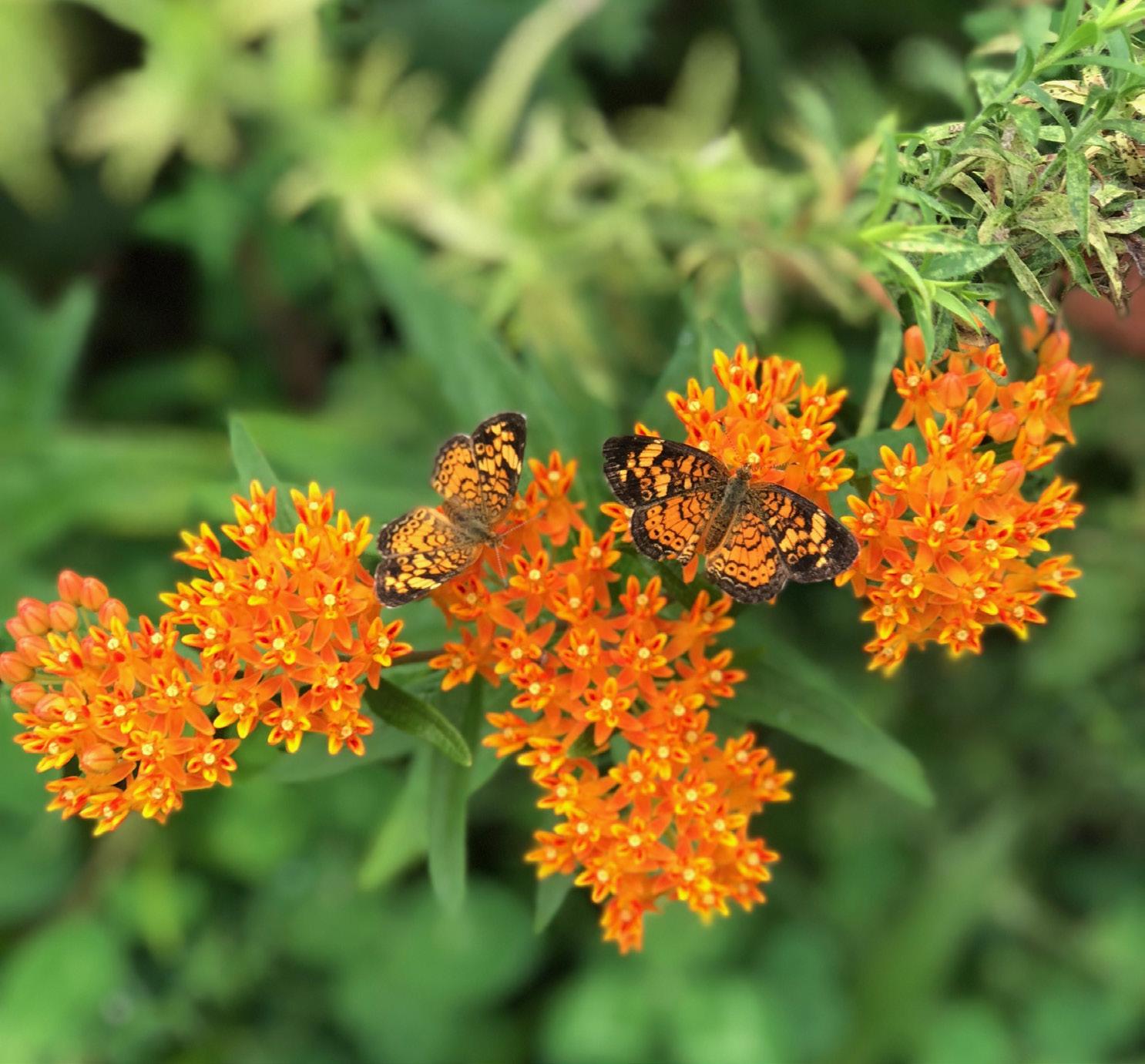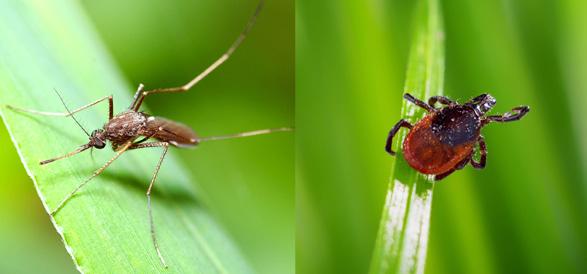
3 minute read
The Commons
A member of the sunflower family, Helianthus divaricatus (the woodland sunflower) also attracts pollinators. Photo: Maureen Weir
The Power of Native Plants
A guide to responsible urban gardening that includes tips on planting to protect our ecosystem.
By Maureen Weir
The thought of an ecosystem often brings to mind images of dense forests, expansive coastal habitats, or remote environments like the ones you read about in National Geographic. But the truth is, if you stand on any sidewalk in Queen Village, you are surrounded by an ecosystem.
All too often, urban environments are viewed as separate from the natural world, but that is far from the truth. While you are standing on that sidewalk, look around at the surrounding plant life. Look up at the birds flying by. Why are they there? Is it because of the types of trees growing on your block? Is it due to our neighborhood’s proximity to the Delaware River? Or perhaps there is a particular food source thriving nearby?
Naturalist John Muir once said, “When one tugs at a single thing in nature, he finds it attached to the rest of the world.” This truth applies as much to our own neighborhood as it does to anywhere else. Our urban community is part of a larger ecosystem, and we are connected to everything in it. The good news is that by simply keeping this fact top of mind while tending to our gardens, we can all do our part to promote a healthier ecosystem.
Container gardens, window boxes, and green spaces do more than just pretty up our sidewalks, stoops, and neighborhood. They provide valuable food sources and shelter for wildlife and other organisms—which is why it is so important to use native plants. Using native plants creates greater biodiversity by sustaining the organisms that coexist within the same ecosystem. For example, native plants attract insects that many birds in our neighborhood need to survive. Nonnative plants may not attract those insects and thus jeopardize a critical food source for the birds. That’s because species that evolve in the same ecosystem are connected to one another. Take one out and the others feel the impact. Put something in that hasn’t evolved here, and it creates a chain reaction that may have negative results.
Getting started with native plants is easier than you think, with websites like the Audubon Society offering a database listing native plants based on zip code. Some common suggestions for our area include various species of goldenrod, black-eyed susan, purple coneflower, bee balm, and milkweed. These plants attract native bees, butterflies, and other
Asclepias tuberosa, aka butterfly weed or butterfly milkweed, was used to treat smallpox in the 1800s. Today, it is prized for its butterfly-attracting qualities. Photo: Maureen Weir
pollinators, which all need our help due to diminishing green spaces and the increased use of pesticides.
Speaking of pesticides, you may think using certain chemicals gets rid of only the insects in your garden, but what you use has a direct effect on the birds that eat those insects. Again, everything is connected, which is why it is also important to use only non-toxic, environmentally safe products.
Incorporating native plants into urban gardens offers other benefits as well. Since they evolved here, they are better suited for our climate, require less maintenance, and are less likely to require pesticides. Available in all shapes, sizes, and colors, they also provide the same level of beauty as exotic species. Native plants can usually be purchased from reputable nurseries—or keep an eye out for native- plant sales sponsored by area nature preserves or gardening groups.
If creating your own native urban garden isn’t in your immediate future, consider getting involved with one of our Queen Village gardening groups. In fact, to see our local ecosystem in action, stroll down to any of these community spaces and sit on a bench for a few minutes. You are sure to see a wide variety of birds nesting in the trees, hanging out in the hedges, or digging up insects for food. Look closely and you might just spot butterflies and bees flitting from flower to flower and dispersing the pollen so essential to the survival of so many species.
The bottom line: We are all a part of nature as much as nature is a part of us. The decisions we make and the actions we take really do have an impact. The good news is that it doesn’t take a huge effort to make a positive contribution. Simply planting a garden of any size and giving thought to what you’re planting could make all the difference in the world—or at least in our own ecosystem. ■











